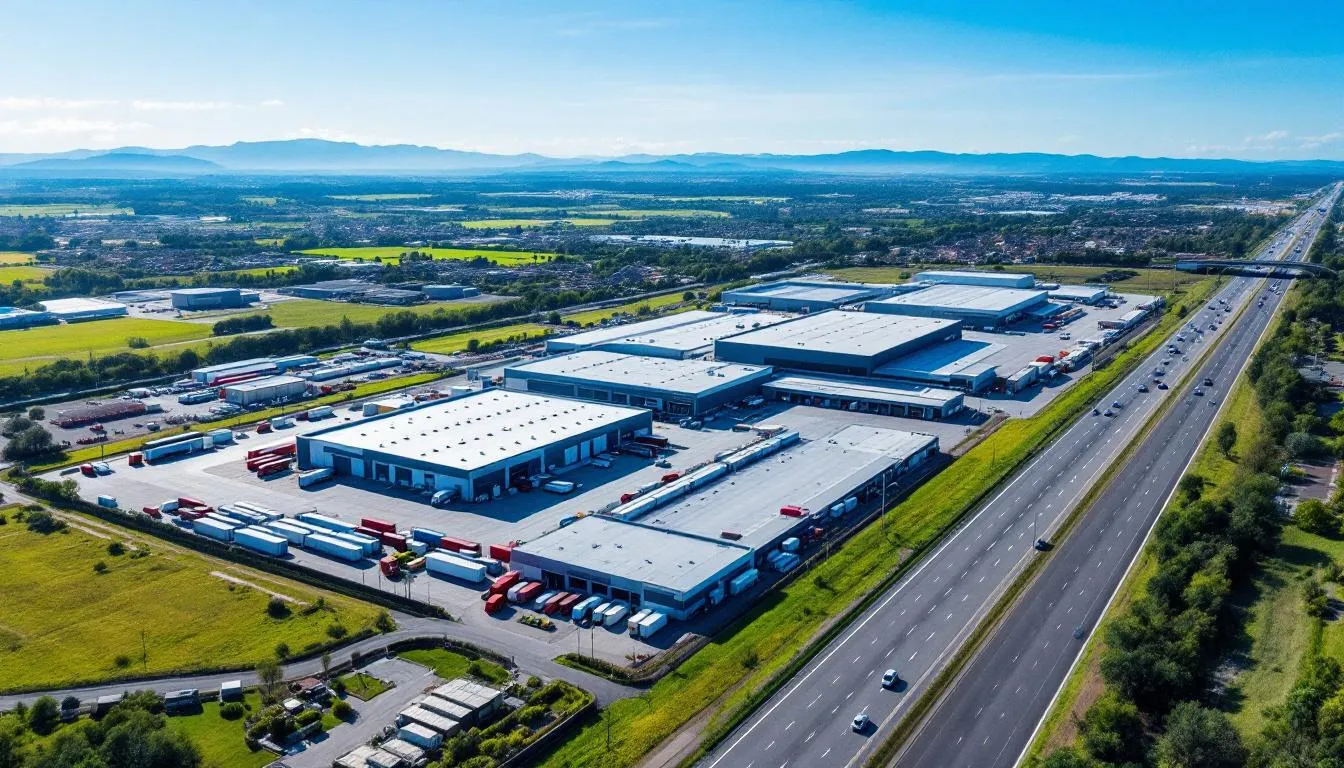In today’s fast-paced logistics environment, strategically positioning logistics centers near highways is crucial for success. This approach not only enhances operational efficiency but also plays a vital role in reducing transportation costs and speeding up delivery times across both urban and rural markets. By leveraging strategic highway positioning, logistics companies can better respond to market demands, streamline supply chains, and ultimately boost customer satisfaction.
This article delves into the multifaceted benefits of such positioning, offering insights on economic advantages, case studies of successful implementations, and emerging trends that are shaping the future of highway logistics optimization.
Advantages of Strategic Highway Locations
Positioning logistics centers near major highways offers numerous advantages that can significantly impact operations. Companies can reduce travel distances, thereby lowering fuel costs and minimizing time on the road. This strategic placement allows for efficient routing that can adapt in real-time to changing road conditions, ensuring that deliveries are made on time.
Additionally, businesses benefit from increased access to diverse markets and reduced load times. This accessibility is particularly crucial for just-in-time delivery systems, where efficiency is paramount. Research indicates that logistics centers located near highways see a higher percentage of on-time deliveries and fewer delays, ultimately leading to more satisfied customers.
Cost-Benefit Analysis of Logistics Centers
Evaluating the cost-effectiveness of logistics centers near highways involves considering various factors, including operational expenses, infrastructure investments, and potential savings from reduced transit times. A cost-benefit analysis (CBA) provides a framework to assess whether the advantages outweigh the costs associated with building and maintaining these facilities.
For instance, studies show that while initial investments in highway-adjacent logistics centers can be significant, the long-term savings generated through improved efficiency and reduced operational costs often justify these expenses. Tools such as the Highway Freight Logistics Reorganization Benefits Estimation Tool can help stakeholders quantify these benefits, aiding in strategic decision-making.
Case Studies in Successful Highway Logistics
Several companies have successfully implemented logistics strategies centered around highway positioning, showcasing the tangible benefits this approach can deliver. For example, UPS has leveraged advanced route optimization software that significantly improved delivery efficiency by analyzing highway traffic patterns.
Another notable case is that of a major retailer that strategically located its distribution center within proximity to a highway interchange. This decision reduced overall transportation costs by 20% and enhanced delivery capabilities, allowing faster replenishment of stock across regional stores.
Impact on Regional Economic Growth
The establishment of logistics centers near highways can stimulate regional economic growth by creating jobs and enhancing local business ecosystems. These facilities also attract other businesses, leading to the development of logistics clusters that promote competitiveness.
Research indicates a correlation between improved logistics infrastructure and economic conditions in surrounding areas, making highway positioning not only a logistical advantage but also a catalyst for broader economic benefits. Increased efficiency in logistics operations can lead to lower prices for consumers and more robust local economies.
Future Trends in Highway Logistics Optimization
As we look to the future, several trends are expected to influence logistics optimization around highways. Advances in technology, such as AI-driven analytics and autonomous vehicles, promise to enhance route efficiency further. Additionally, sustainability practices are becoming paramount; optimizing logistics operations to be more environmentally friendly will be critical.
Moreover, the integration of data analytics will allow companies to better predict demand and optimize supply chains, further solidifying the importance of resource allocation in logistics management. Staying ahead of these trends will be essential for logistics companies wishing to maintain a competitive edge in an evolving market.
Actionable Tips for Logistics Managers
- Evaluate potential sites based on proximity to major highways to reduce logistical costs.
- Invest in route optimization technology to improve delivery efficiency.
- Conduct regular cost-benefit analyses to ensure strategic investments yield positive returns.
- Foster partnerships with local government to enhance infrastructure development.
- Stay informed on technological advancements in logistics and transportation.
Conclusion
- Strategic highway positioning enhances efficiency and reduces costs.
- Cost-benefit analysis is essential for informed decision-making in logistics.
- Successful case studies demonstrate the potential gains from optimized highway logistics.
- Logistics centers positively impact regional economic growth.
- Emerging trends indicate a future focused on technology and sustainability.
In conclusion, the strategic positioning of logistics centers near highways is not merely an operational choice; it is a pivotal strategy for success in an increasingly competitive market. Embracing this approach can lead to enhanced efficiency, cost savings, and contributions to economic growth.
Are you ready to optimize your logistics strategies and take advantage of the benefits that strategic highway positioning offers? Contact us today to learn how we can assist you in achieving logistics excellence.




